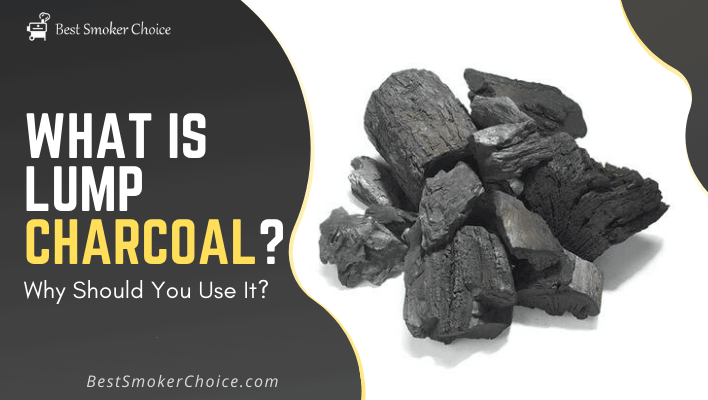What is lump charcoal, and why should you use it? Let’s find out!
Hardwood lump charcoal is manufactured from roasted natural hardwood, tree branches, and twigs in a low-oxygen environment. Because the hardwood retains its natural shape and tree-like qualities after being roasted and turned into charcoal, resulting in massive lumps of coals, this charcoal is known as lump charcoal.
How Is Hardwood Lump Charcoal Made?
Lump charcoal is made from natural hardwoods. Lump charcoal can be manufactured from logs, wood scraps, branches, and twigs, among other things. South American trees like Quebracho, which has a distinct flavor, are widely used to make charcoal, but oak and hickory hardwoods are also used.
Water, tar, and other organic components are removed from the wood by cooking it in a low-oxygen atmosphere.
As a result, lump charcoal is made up of wood chunks that appear natural but have been turned into charcoal. Lump charcoal can be characterized by its lump size and uneven shapes because it is all-natural. The top lump charcoal producers use 100 percent natural charcoal that burns clean and has no taste or spice interference.
Why Is Lump Charcoal Preferred in Some Situations?
Lump charcoal is made without the use of a binder, artificial flavors, or chemicals. Because of its natural appearance, many BBQ aficionados favor lump charcoal, and many only use it for smoking meats and grilling meals.
Because of its natural origins, lump charcoal is the closest thing to grilling and smoking meals using natural wood. On the other hand, charcoal should never be used as a flavoring agent. Lump charcoal, like any other sort of charcoal, is used as a source of fuel and heat.
Lump charcoal is preferred by Kamado grill owners over briquette charcoal because lump charcoal produces less ash. This is especially important for kamado grills, which rely heavily on airflow for their design and effectiveness, and too much ash in the firebox might cause the grill to shut down, rendering it worthless.
Because kamado grills do not have large ash pans, a large amount of ah can easily jam the ashpan and cause airflow to be disrupted.
Because lump charcoal is natural, it burns clean and hot, which is why many BBQ grill and smoker owners prefer it. As a result, you’ll be able to cook a couple more dogs while using fewer coals.
The disadvantages of lump charcoal are due to its natural characteristics. To begin with, lump charcoal costs more to produce, resulting in a higher per-pound price.
Second, the lumps are available in a variety of shapes, sizes, and lengths. Your grill will heat up unevenly if your parts are of different sizes. For other persons, maintaining and regulating temperature using lump charcoal is more challenging.
Finally, lump charcoal makers do not all roast their wood in the same way. Some have high-quality standards, while low-cost producers may utilize recycled woods, which may introduce contaminants into the mix and end up in your bag, and therefore in your grill.
The key point to remember is that lump charcoal is made from natural wood, and as with everything natural, some components of the manufacturing process are uncontrollable. This product will not be controlled in terms of shape, size, or output because it is a natural by-product of carbonizing natural wood.
The purpose of charcoal is to generate heat, and neither lump charcoal nor briquettes will enhance the flavor of your food. Try some lump charcoal kinds containing hardwoods that can boost flavor, but for a genuine smokey flavor, you will need to use smoking wood in your smoker or charcoal grill.
Conclusion
What is lump charcoal, and why should you use it? We hope that you have gotten the answer. Lump charcoal is an excellent choice for kamado grillers who prefer to use only natural ingredients.
On the other hand, nature does not mean perfection. Lump charcoal, on the other hand, can be used for a variety of grilling techniques, including high-temperature searing and low-temperature smoking.

Hey! I’m Robert Miller, a passionate writer of this blog. Here, I write to provide you the honest reviews and buying guides for the very best of smokers found in the market. I hope you enjoy reading my posts as much as I enjoy writing them for you.
